6 min read
Preparations for Next Moonwalk Simulations Underway (and Underwater) 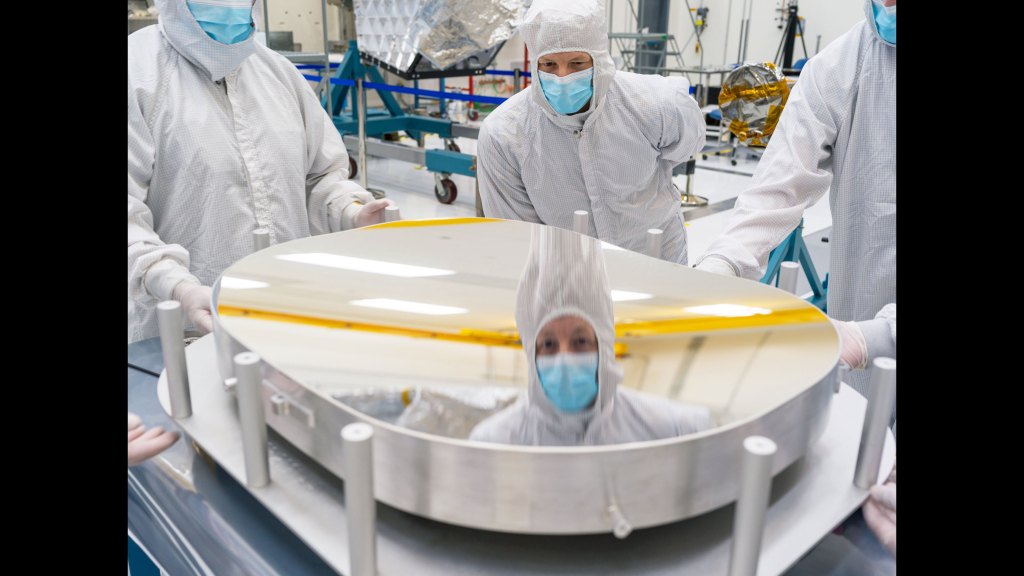 A mirror that was later installed inside the telescope for NASA’s Near-Earth Object Surveyor shows a reflection of principal optical engineer Brian Monacelli during an inspection of the mirror’s surface at the agency’s Jet Propulsion Laboratory on July 17.NASA/JPL-Caltech
A mirror that was later installed inside the telescope for NASA’s Near-Earth Object Surveyor shows a reflection of principal optical engineer Brian Monacelli during an inspection of the mirror’s surface at the agency’s Jet Propulsion Laboratory on July 17.NASA/JPL-Caltech 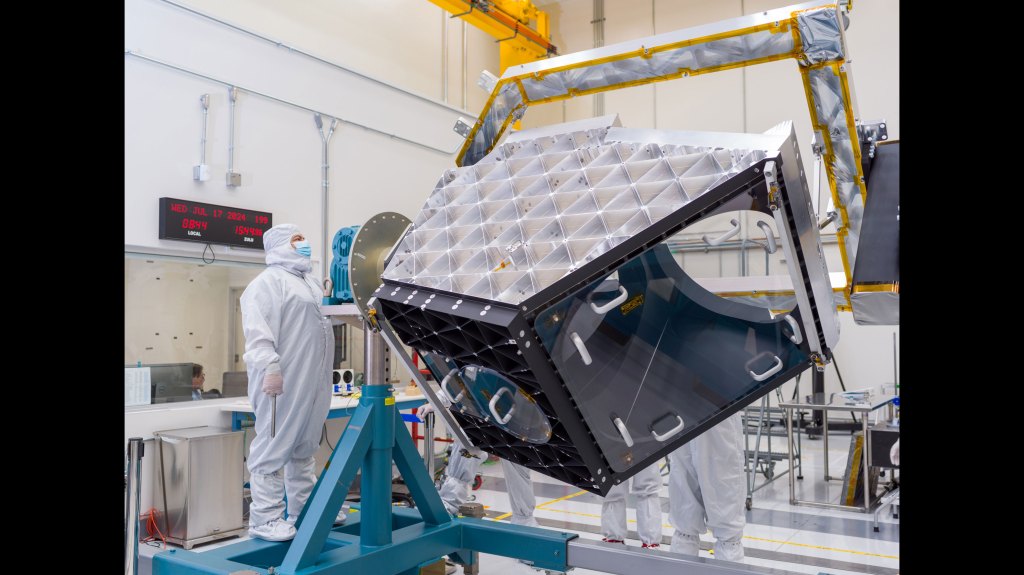 A technician operates articulating equipment to rotate NEO Surveyor’s aluminum optical bench — part of the spacecraft’s telescope — in a clean room at NASA’s Jet Propulsion Laboratory in Southern California on July 17.NASA/JPL-Caltech The mirrors for NASA’s Near-Earth Object Surveyor space telescope are being installed and aligned, and work on other spacecraft components is accelerating.
A technician operates articulating equipment to rotate NEO Surveyor’s aluminum optical bench — part of the spacecraft’s telescope — in a clean room at NASA’s Jet Propulsion Laboratory in Southern California on July 17.NASA/JPL-Caltech The mirrors for NASA’s Near-Earth Object Surveyor space telescope are being installed and aligned, and work on other spacecraft components is accelerating.
NASA’s new asteroid-hunting spacecraft is taking shape at NASA’s Jet Propulsion Laboratory in Southern California. Called NEO Surveyor (Near-Earth Object Surveyor), this cutting-edge infrared space telescope will seek out the hardest-to-find asteroids and comets that might pose a hazard to our planet. In fact, it is the agency’s first space telescope designed specifically for planetary defense.
Targeting launch in late 2027, the spacecraft will travel a million miles to a region of gravitational stability — called the L1 Lagrange point — between Earth and the Sun. From there, its large sunshade will block the glare and heat of sunlight, allowing the mission to discover and track near-Earth objects as they approach Earth from the direction of the Sun, which is difficult for other observatories to do. The space telescope also may reveal asteroids called Earth Trojans, which lead and trail our planet’s orbit and are difficult to see from the ground or from Earth orbit.
NEO Surveyor relies on cutting-edge detectors that observe two bands of infrared light, which is invisible to the human eye. Near-Earth objects, no matter how dark, glow brightly in infrared as the Sun heats them. Because of this, the telescope will be able to find dark asteroids and comets, which don’t reflect much visible light. It also will measure those objects, a challenging task for visible-light telescopes that have a hard time distinguishing between small, highly reflective objects and large, dark ones.
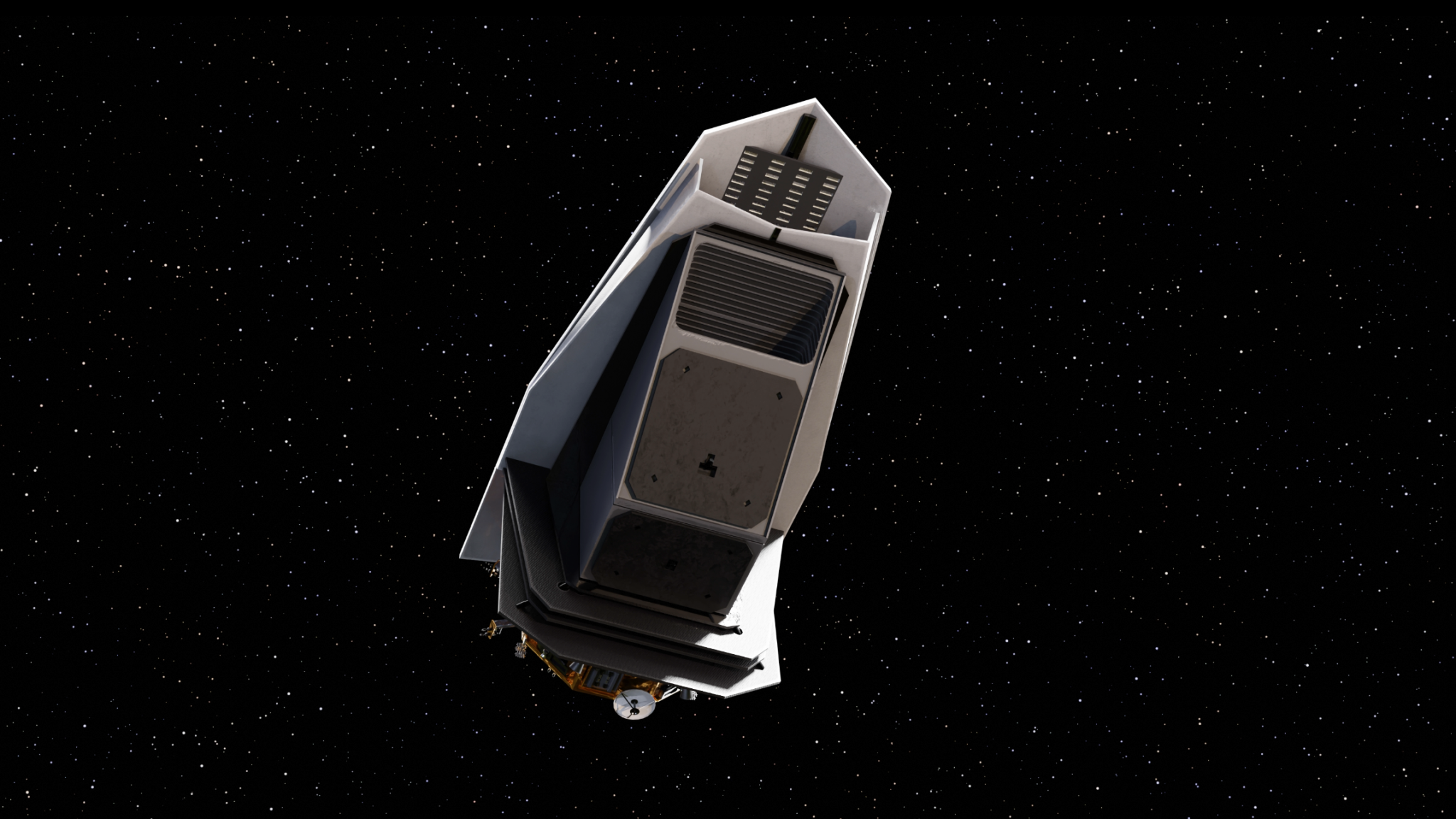 This artist’s concept depicts NASA’s NEO Surveyor in deep space. The black-paneled angular structure in the belly of the spacecraft is the instrument enclosure that is being built at JPL. The mission’s infrared telescope will be installed inside the enclosure.NASA/JPL-Caltech “NEO Surveyor is optimized to help us to do one specific thing: enable humanity to find the most hazardous asteroids and comets far enough in advance so we can do something about them,” said Amy Mainzer, principal investigator for NEO Surveyor and a professor at the University of California, Los Angeles. “We aim to build a spacecraft that can find, track, and characterize the objects with the greatest chance of hitting Earth. In the process, we will learn a lot about their origins and evolution.”
This artist’s concept depicts NASA’s NEO Surveyor in deep space. The black-paneled angular structure in the belly of the spacecraft is the instrument enclosure that is being built at JPL. The mission’s infrared telescope will be installed inside the enclosure.NASA/JPL-Caltech “NEO Surveyor is optimized to help us to do one specific thing: enable humanity to find the most hazardous asteroids and comets far enough in advance so we can do something about them,” said Amy Mainzer, principal investigator for NEO Surveyor and a professor at the University of California, Los Angeles. “We aim to build a spacecraft that can find, track, and characterize the objects with the greatest chance of hitting Earth. In the process, we will learn a lot about their origins and evolution.”
Coming Into Focus The spacecraft’s only instrument is its telescope. About the size of a washer-and-dryer set, the telescope’s blocky aluminum body, called the optical bench, was built in a JPL clean room. Known as a three-mirror anastigmat telescope, it will rely on curved mirrors to focus light onto its infrared detectors in such a way that minimizes optical aberrations.
“We have been carefully managing the fabrication of the spacecraft’s telescope mirrors, all of which were received in the JPL clean room by July,” said Brian Monacelli, principal optical engineer at JPL. “Its mirrors were shaped and polished from solid aluminum using a diamond-turning machine. Each exceeds the mission’s performance requirements.”
Monacelli inspected the mirror surfaces for debris and damage, then JPL’s team of optomechanical technicians and engineers attached the mirrors to the telescope’s optical bench in August. Next, they will measure the telescope’s performance and align its mirrors.
Complementing the mirror assembly are the telescope’s mercury-cadmium-telluride detectors, which are similar to the detectors used by NASA’s recently retired NEOWISE (short for Near-Earth Object Wide-field Infrared Survey Explorer) mission. An advantage of these detectors is that they don’t necessarily require cryogenic coolers or cryogens to lower their operational temperatures in order to detect infrared wavelengths. Cryocoolers and cryogens can limit the lifespan of a spacecraft. NEO Surveyor will instead keep its cool by using its large sunshade to block sunlight from heating the telescope and by occupying an orbit beyond that of the Moon, minimizing heating from Earth.
The telescope will eventually be installed inside the spacecraft’s instrument enclosure, which is being assembled in JPL’s historic High Bay 1 clean room where NASA missions such as Voyager, Cassini, and Perseverance were constructed. Fabricated from dark composite material that allows heat to escape, the enclosure will help keep the telescope cool and prevent its own heat from obscuring observations.
Once it is completed in coming weeks, the enclosure will be tested to make sure it can withstand the rigors of space exploration. Then it will be mounted on the back of the sunshade and atop the electronic systems that will power and control the spacecraft.
“The entire team has been working hard for a long time to get to this point, and we are excited to see the hardware coming together with contributions from our institutional and industrial collaborators from across the country,” said Tom Hoffman, NEO Surveyor’s project manager at JPL. “From the panels and cables for the instrument enclosure to the detectors and mirrors for the telescope — as well as components to build the spacecraft — hardware is being fabricated, delivered, and assembled to build this incredible observatory.”
Assembly of NEO Surveyor can be viewed 24 hours a day, seven days a week, via JPL’s live cam.
More About NEO Surveyor The NEO Surveyor mission marks a major step for NASA toward reaching its U.S. Congress-mandated goal to discover and characterize at least 90% of the near-Earth objects more than 460 feet (140 meters) across that come within 30 million miles (48 million kilometers) of our planet’s orbit. Objects of this size can cause significant regional damage, or worse, should they impact the Earth.
The mission is tasked by NASA’s Planetary Science Division within the Science Mission Directorate; program oversight is provided by the Planetary Defense Coordination Office, which was established in 2016 to manage the agency’s ongoing efforts in planetary defense. NASA’s Planetary Missions Program Office at the agency’s Marshall Space Flight Center provides program management for NEO Surveyor.
The project is being developed by JPL and is led by principal investigator Amy Mainzer at UCLA. Established aerospace and engineering companies have been contracted to build the spacecraft and its instrumentation, including BAE Systems, Space Dynamics Laboratory, and Teledyne. The Laboratory for Atmospheric and Space Physics at the University of Colorado, Boulder will support operations, and IPAC-Caltech in Pasadena, California, is responsible for processing survey data and producing the mission’s data products. Caltech manages JPL for NASA.
More information about NEO Surveyor is available at:
https://science.nasa.gov/mission/neo-surveyor
News Media Contacts Ian J. O’Neill
Jet Propulsion Laboratory, Pasadena, Calif.
818-354-2649
ian.j.oneill@jpl.nasa.gov
Karen Fox / Alana Johnson
NASA Headquarters, Washington
202-358-1600 / 202-358-1501
karen.c.fox@nasa.gov / alana.r.johnson@nasa.gov
2024-114
Keep Exploring Discover Related Topics Missions


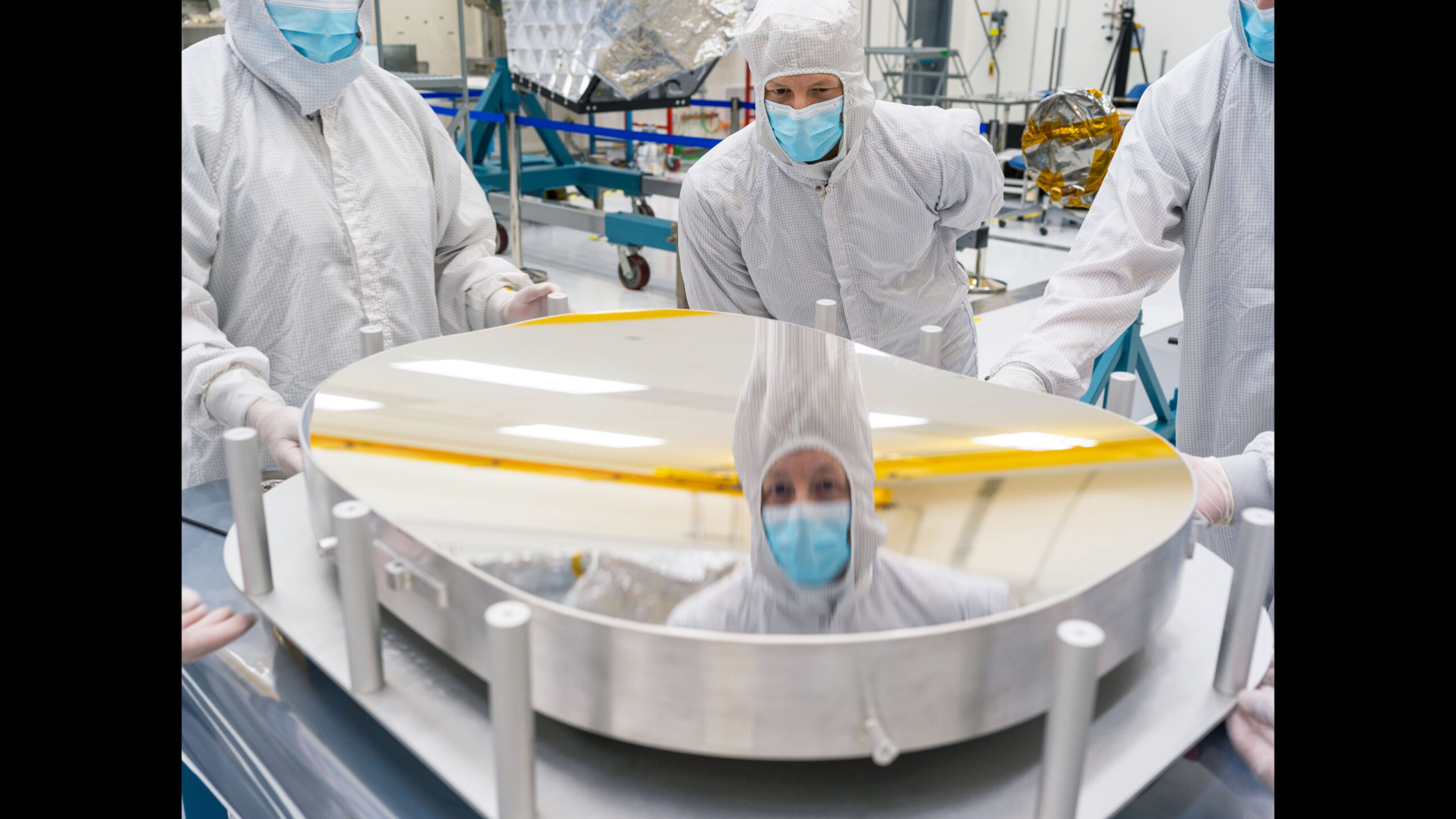
 5 min read NASA’s Europa Clipper Gets Set of Super-Size Solar Arrays Article 1 day ago
5 min read NASA’s Europa Clipper Gets Set of Super-Size Solar Arrays Article 1 day ago 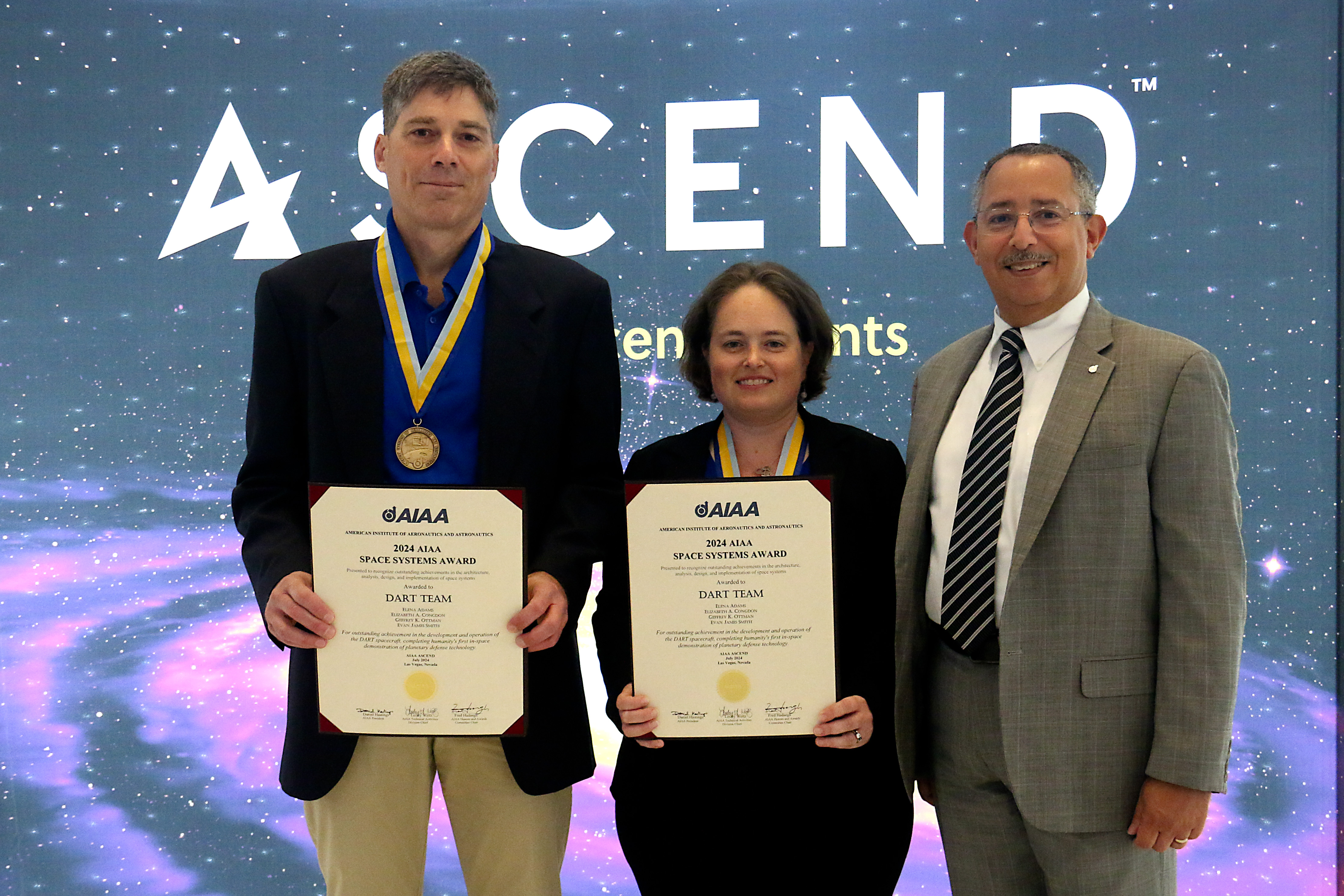 2 min read NASA’s DART Team Earns AIAA Space Systems Award for Pioneering Mission NASA’s DART (Double Asteroid Redirection Test) mission continues to yield scientific discoveries and garner accolades for its groundbreaking…
2 min read NASA’s DART Team Earns AIAA Space Systems Award for Pioneering Mission NASA’s DART (Double Asteroid Redirection Test) mission continues to yield scientific discoveries and garner accolades for its groundbreaking…
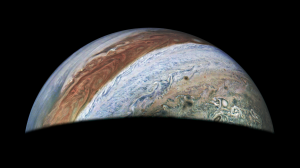 5 min read Danish Instrument Helps NASA’s Juno Spacecraft See Radiation Article 1 week ago
5 min read Danish Instrument Helps NASA’s Juno Spacecraft See Radiation Article 1 week ago 


